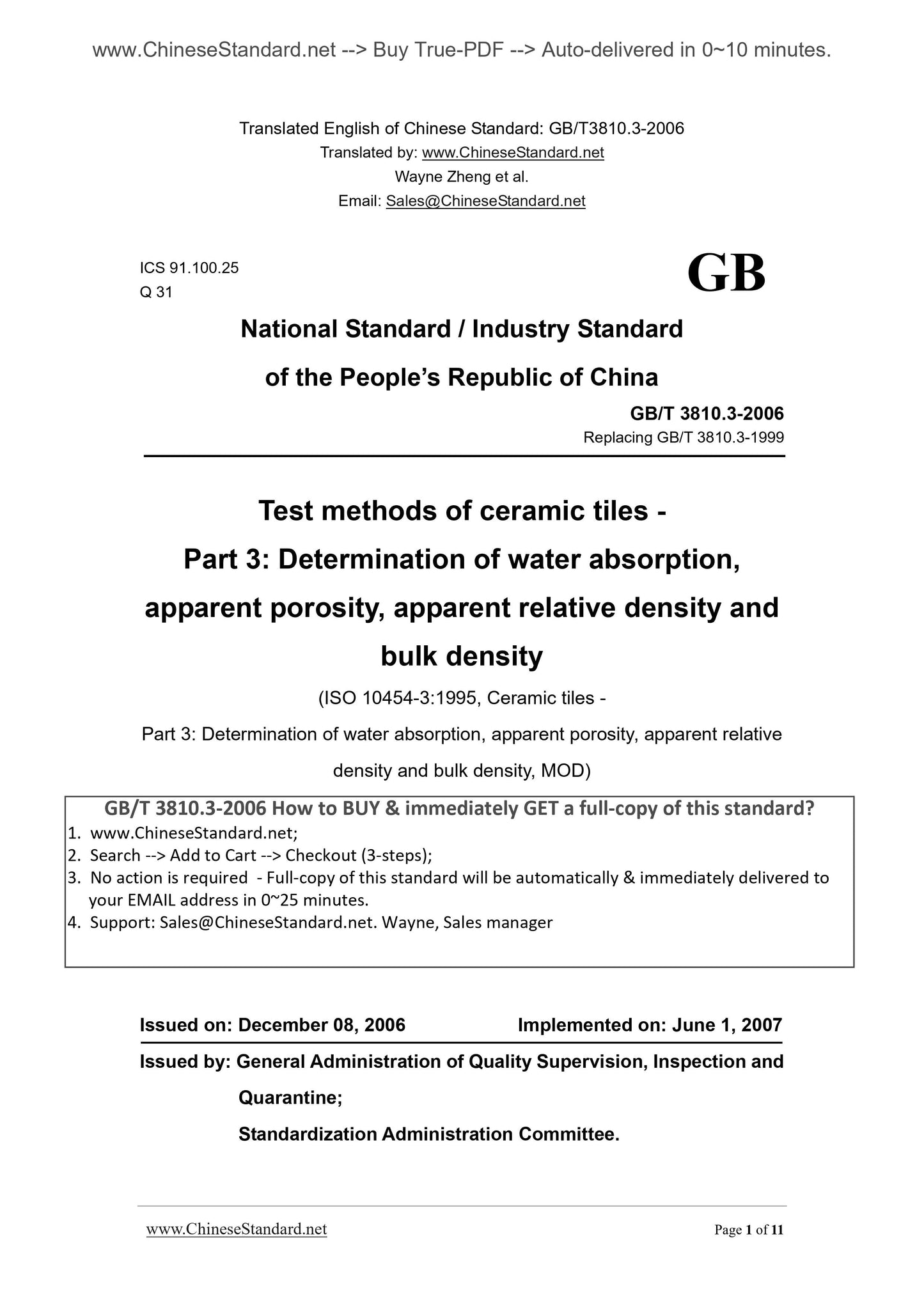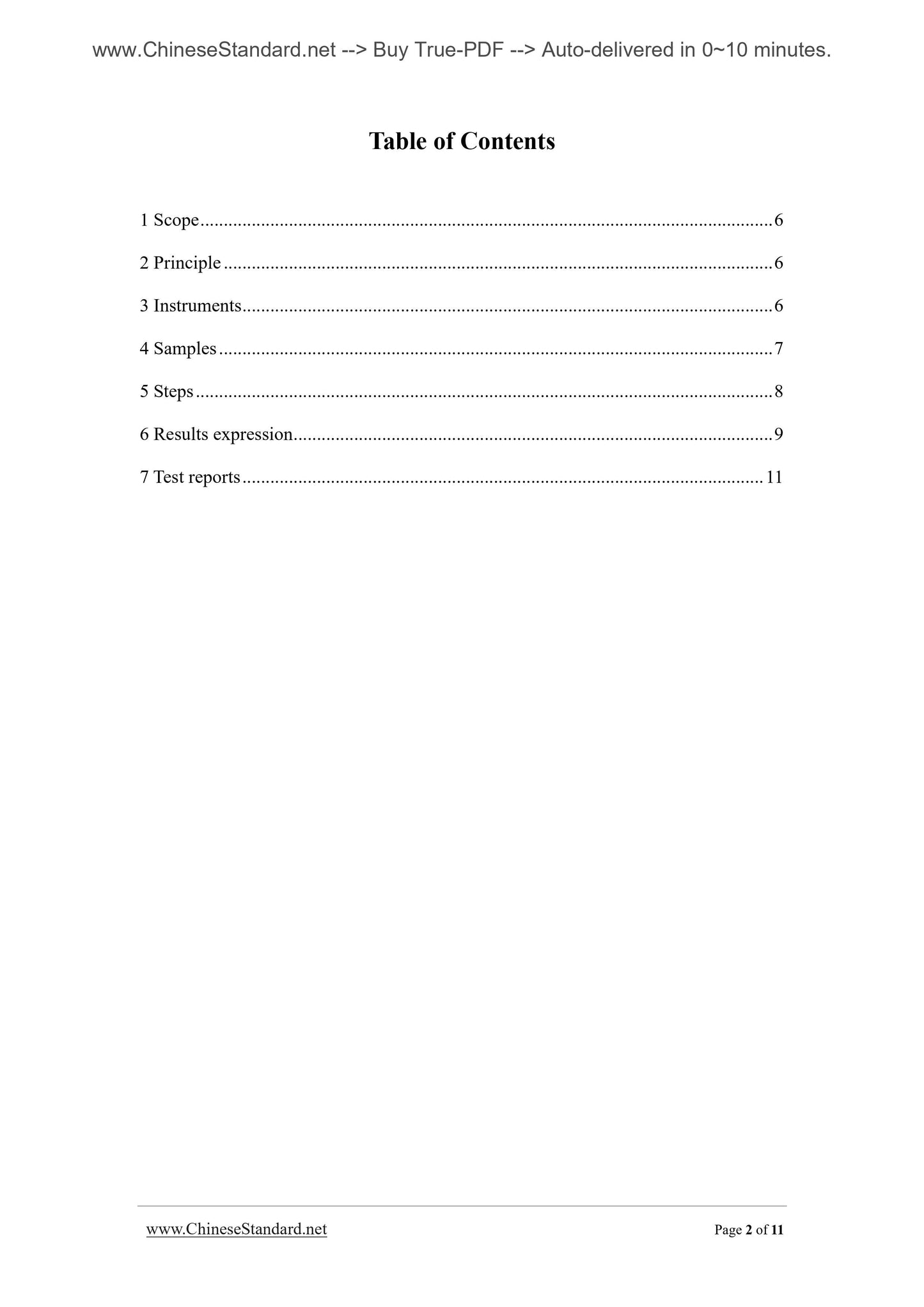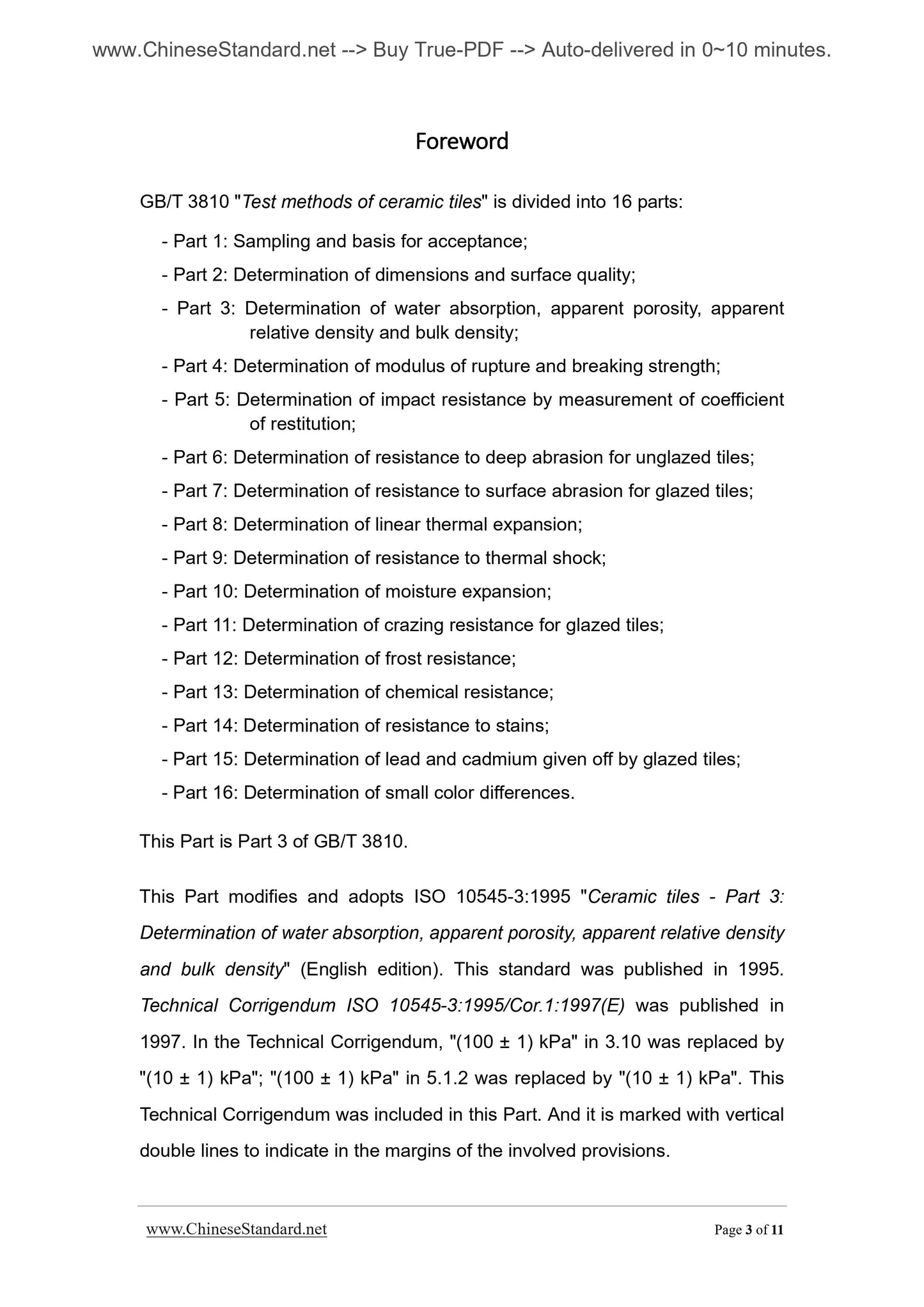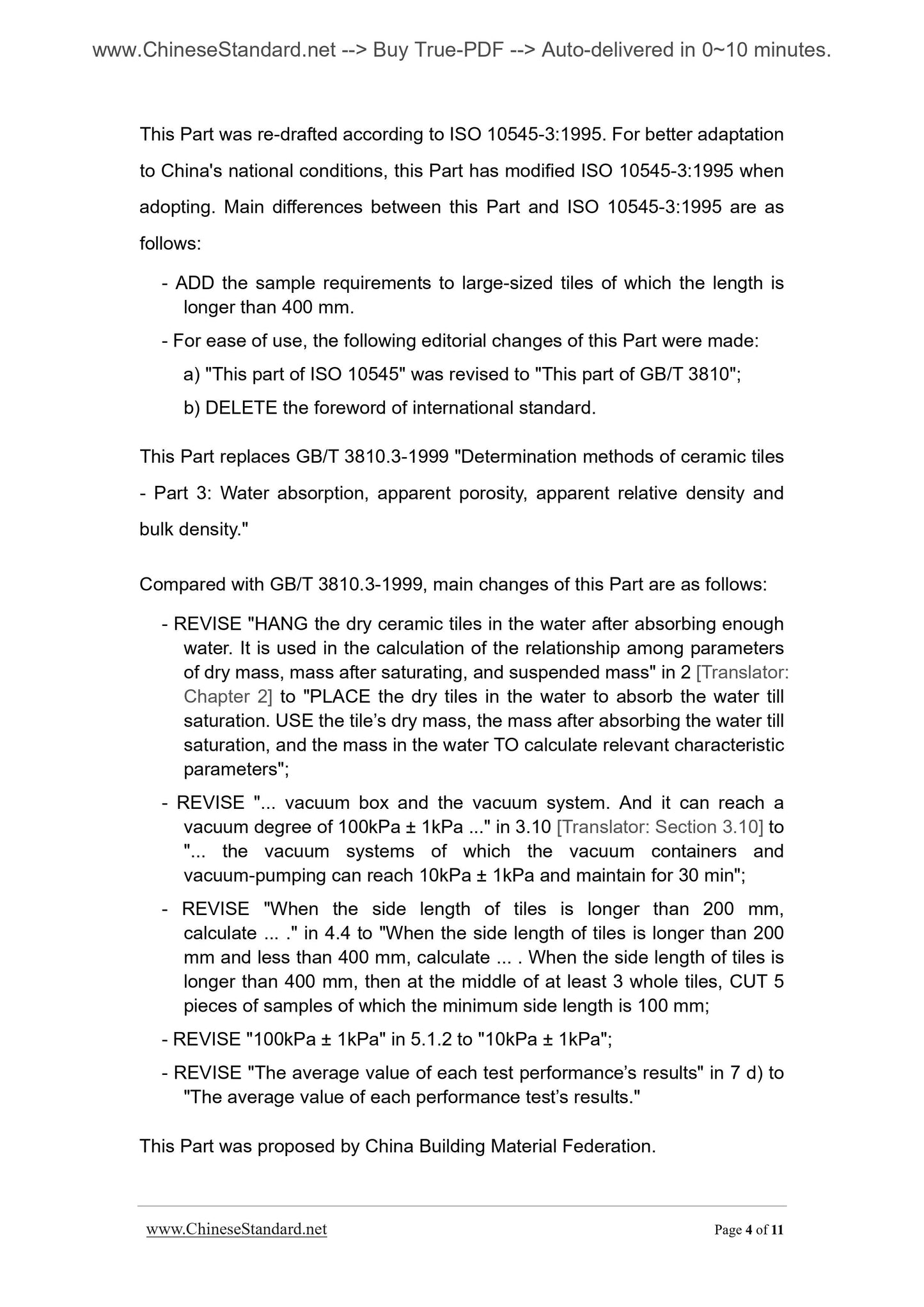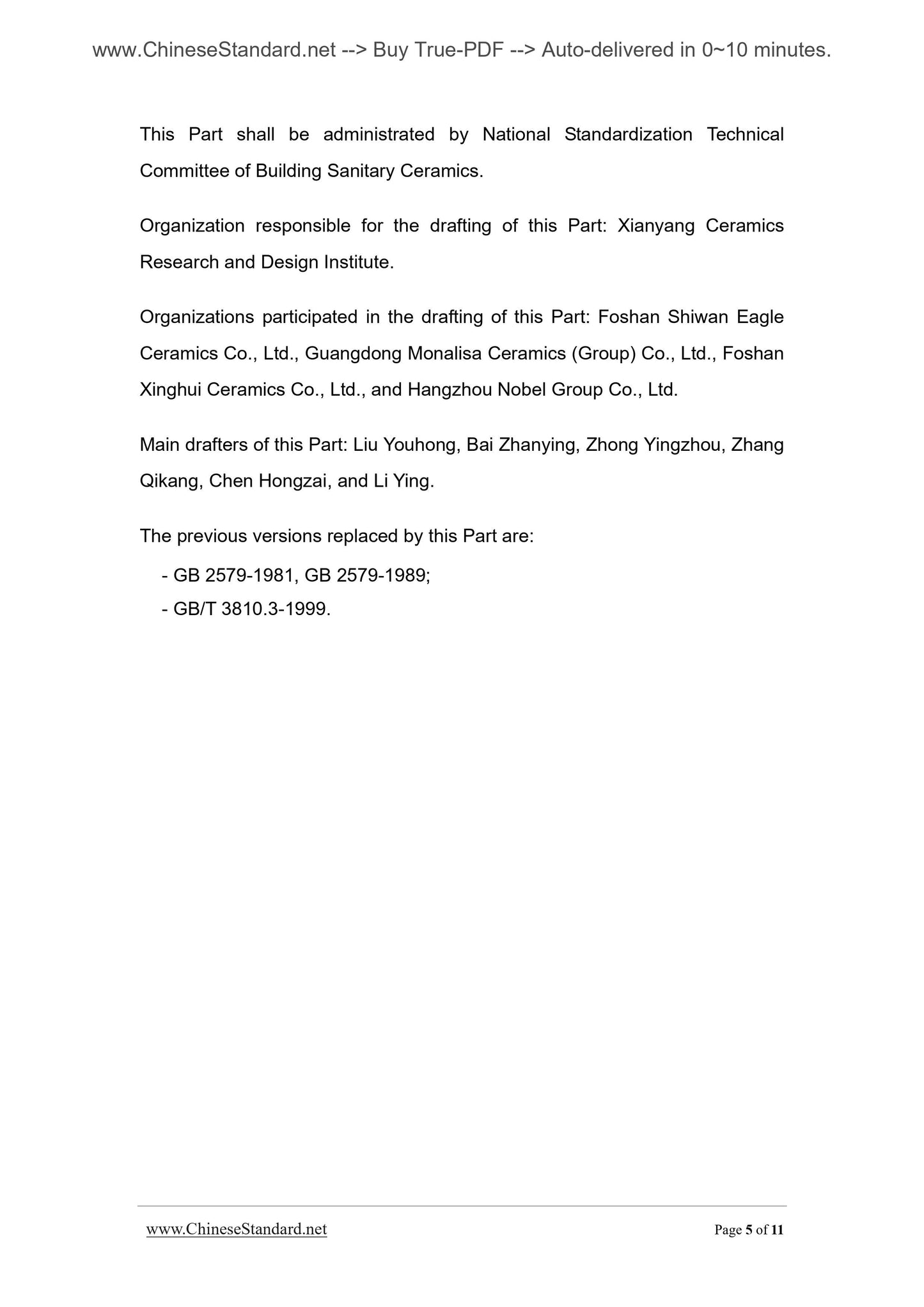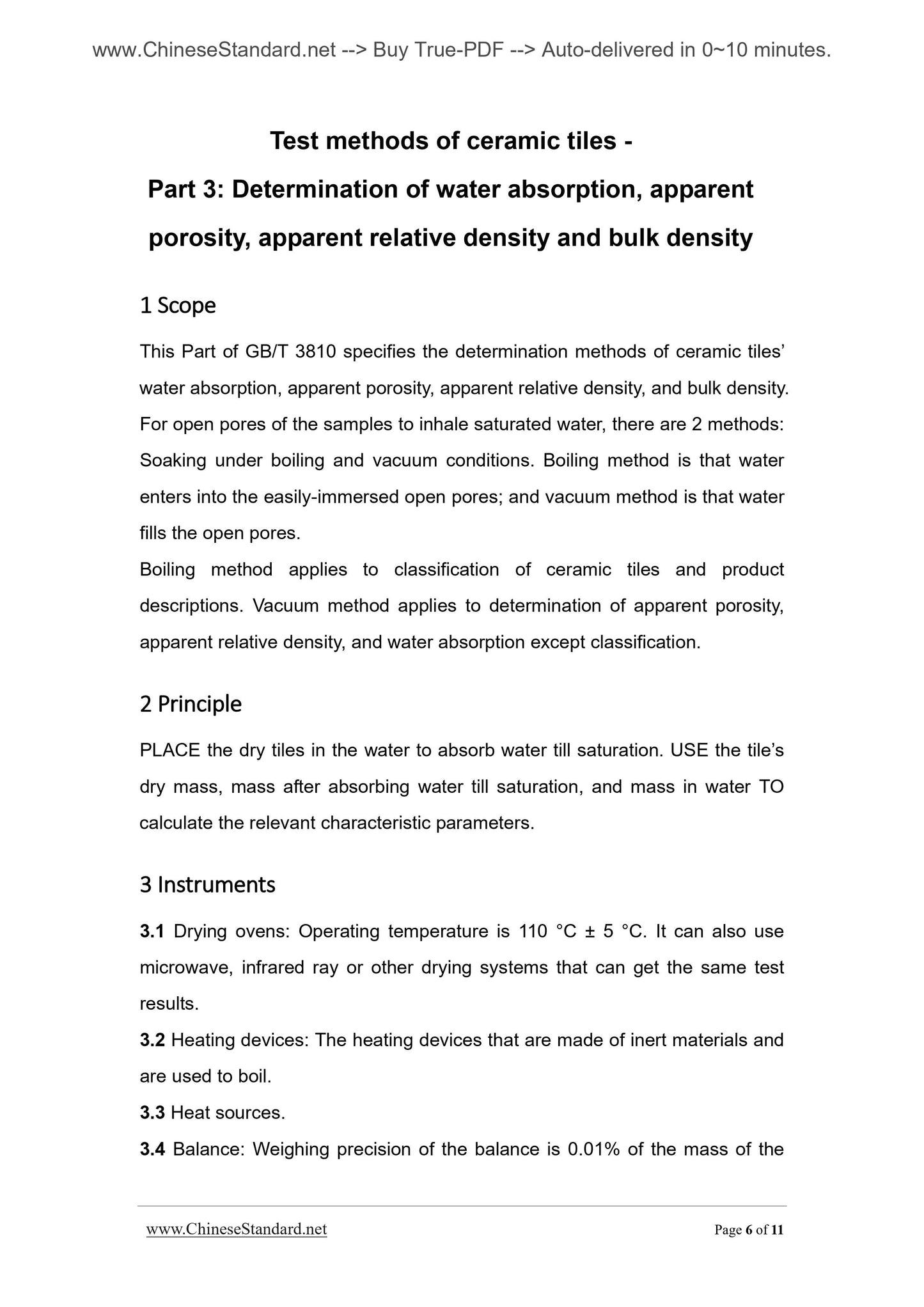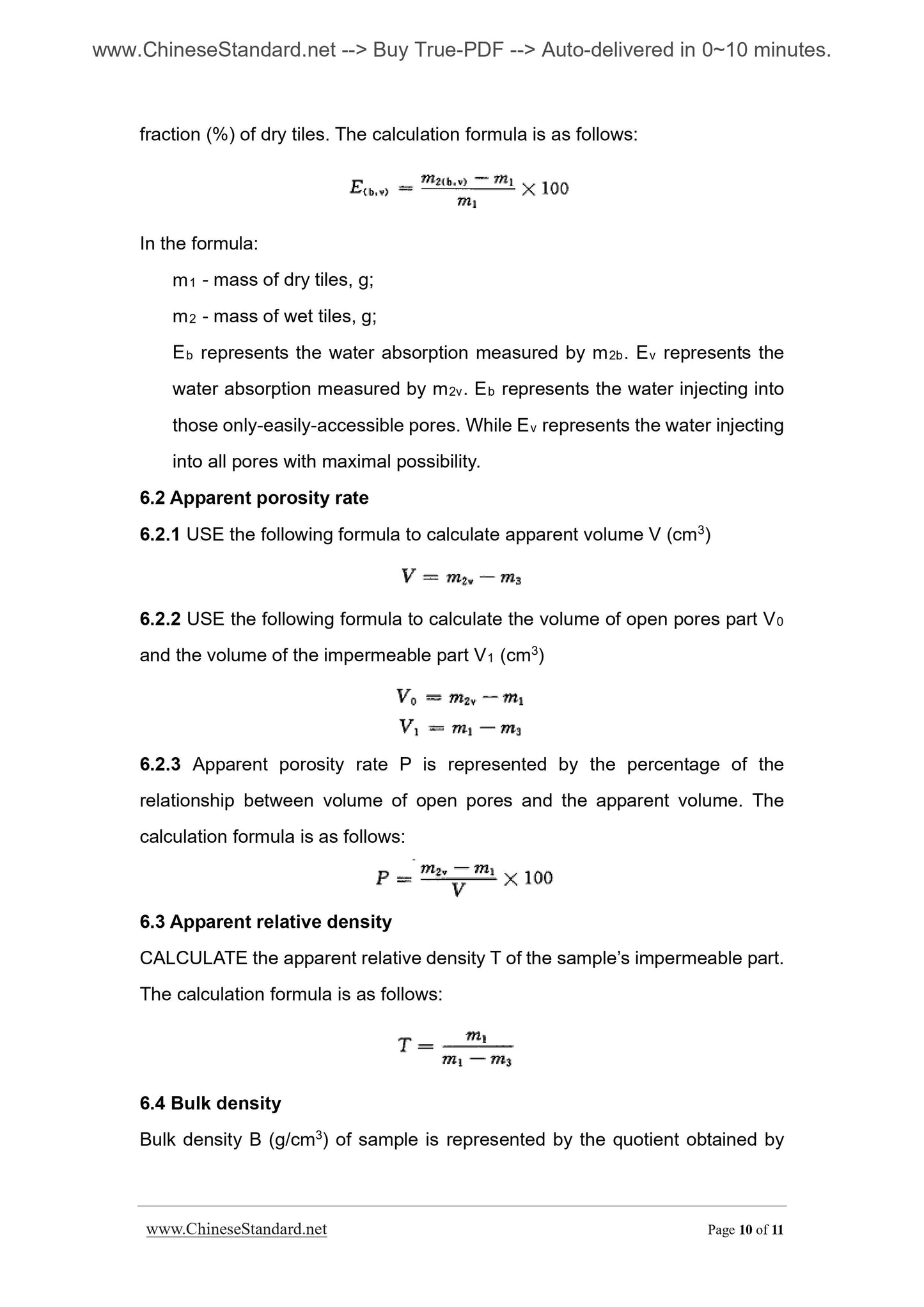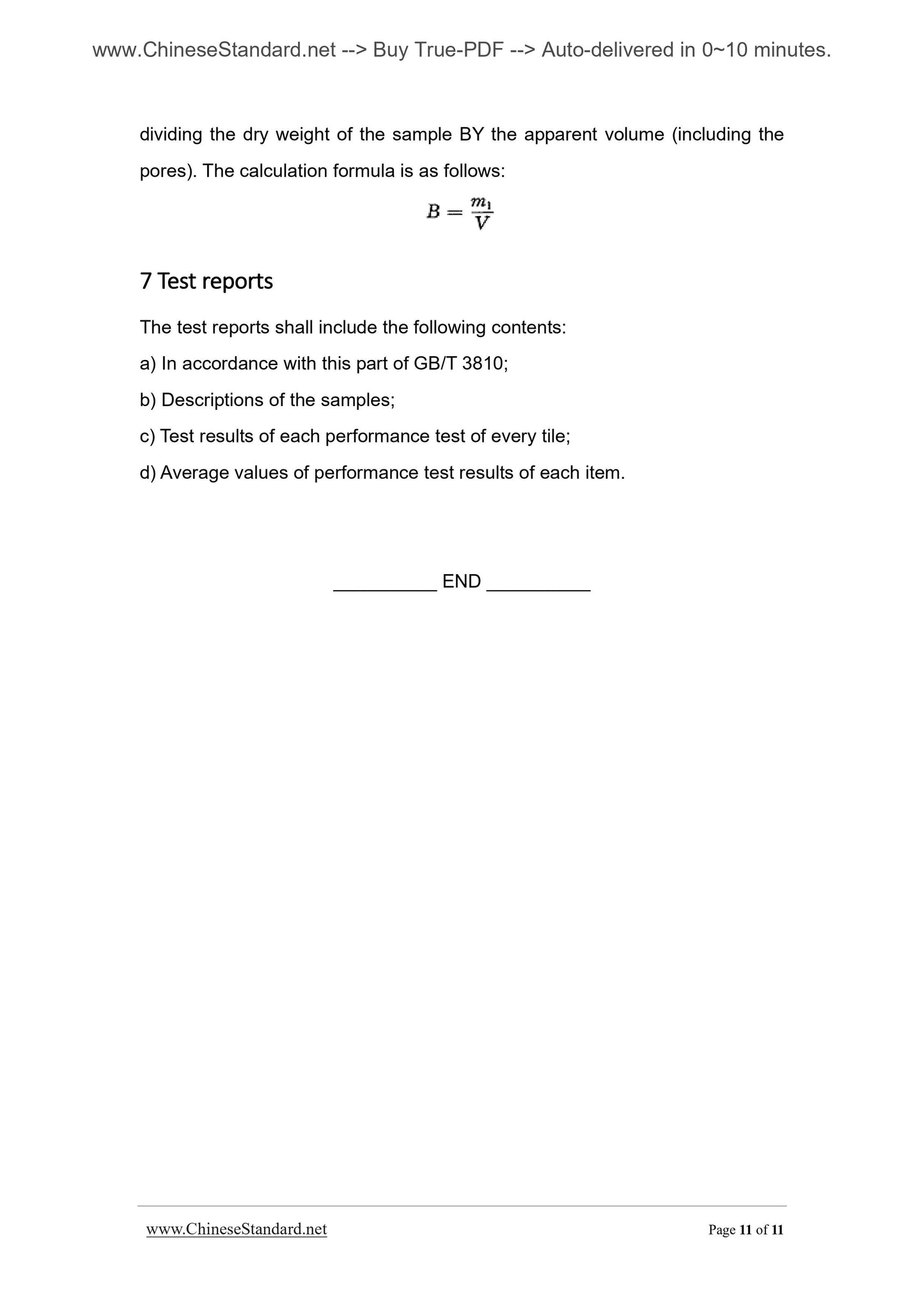1
/
of
8
www.ChineseStandard.us -- Field Test Asia Pte. Ltd.
GB/T 3810.3-2006 English PDF (GB/T3810.3-2006)
GB/T 3810.3-2006 English PDF (GB/T3810.3-2006)
Regular price
$90.00
Regular price
Sale price
$90.00
Unit price
/
per
Shipping calculated at checkout.
Couldn't load pickup availability
GB/T 3810.3-2006: Test methods of ceramic tiles -- Part 3: Determination of water absorption, apparent porosity, apparent relative density and bulk density
Delivery: 9 seconds. Download (and Email) true-PDF + Invoice.Get Quotation: Click GB/T 3810.3-2006 (Self-service in 1-minute)
Newer / historical versions: GB/T 3810.3-2006
Preview True-PDF
Scope
This Part of GB/T 3810 specifies the determination methods of ceramic tiles’water absorption, apparent porosity, apparent relative density, and bulk density.
For open pores of the samples to inhale saturated water, there are 2 methods.
Soaking under boiling and vacuum conditions. Boiling method is that water
enters into the easily-immersed open pores; and vacuum method is that water
fills the open pores.
Boiling method applies to classification of ceramic tiles and product
descriptions. Vacuum method applies to determination of apparent porosity,
apparent relative density, and water absorption except classification.
Basic Data
| Standard ID | GB/T 3810.3-2006 (GB/T3810.3-2006) |
| Description (Translated English) | Test methods of ceramic tiles -- Part 3: Determination of water absorption, apparent porosity, apparent relative density and bulk density |
| Sector / Industry | National Standard (Recommended) |
| Classification of Chinese Standard | Q31 |
| Classification of International Standard | 91.100.25 |
| Word Count Estimation | 6,685 |
| Date of Issue | 2006-02-07 |
| Date of Implementation | 2006-09-01 |
| Older Standard (superseded by this standard) | GB/T 3810.3-1999 |
| Adopted Standard | ISO 10545-3-1995, MOD |
| Regulation (derived from) | National Standard Approval Announcement 2006 No.3 (Total No.90) |
| Issuing agency(ies) | General Administration of Quality Supervision, Inspection and Quarantine of the People's Republic of China, Standardization Administration of the People's Republic of China |
| Summary | This standard specifies the ceramic tiles water absorption, apparent relative density and bulk density determination, apparent porosity. Opening the suction hole of the sample saturated with water, there are two methods: immersion in boiling and under vacuum conditions. Easily immersed into boiling water method of opening pores, vacuum method of water filled pore openings. Boiling method is suitable for ceramic tiles classification and product descriptions, vacuum law applies to the apparent porosity, density and water absorption in addition to determination of the apparent relative classification. |
Share
